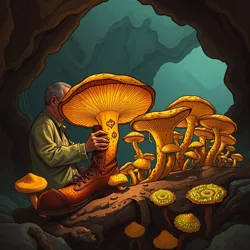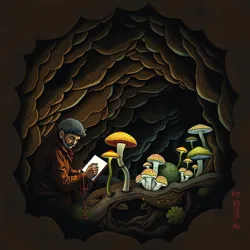The Mycelial Cobbler's Atlas
Featured Article
The Ethical Implications of Fungal Footwear explores the growing controversy surrounding mushroom-leather shoes and their impact on subterranean shoe-farming communities. Recent studies by the Cordwainer's Mycological Society suggest that harvesting dancing chanterelles for their elastic properties may disrupt vital fungal communication networks used by forest cobblers for centuries.
 A master cobbler inspects luminescent spores on traditionally crafted footwear
A master cobbler inspects luminescent spores on traditionally crafted footwear
Did You Know...
-
The Heeltap Mountains are the only known location where self-lacing bracket fungi naturally occur?
-
Moral philosophers in the Bootmaker's Valley have developed a new framework for sustainable sole harvesting based on ancient fungal respect rituals?
-
The discovery of walking pine forests has led to a revolution in living shoe design?
In The News
The recent Great Shoe Migration has caused unprecedented changes in local fungal highway systems, leading to heated debates about footwear preservation rights. Meanwhile, traditional toe-mushroom cultivators report record harvests in the Leather Cap Region.
 Annual migration of wild leather shoes across the fungal plains
Annual migration of wild leather shoes across the fungal plains
Today's Featured Location
Visit the Cordwainer's Caves, where ancient shoe-growing spores illuminate vast chambers filled with naturally occurring bootstrap lichens. Local fungal artisans still practice traditional methods of living shoe cultivation, passed down through generations of mushroom cobblers.
On This Day...
The anniversary of the Great Sole Uprising, when thousands of sentient shoes joined forces with local mycelial networks to establish the first democratic shoe-fungus coalition.
 Ancient cave paintings depicting early shoe-fungus symbiosis
Ancient cave paintings depicting early shoe-fungus symbiosis
Current Events
Ongoing debates in the United Cobbler's Assembly regarding new regulations on consciousness-expanding shoe polish and its effects on fungal shoe ecosystems. The Ethical Footwear Committee continues to investigate reports of unauthorized shoe-mushroom hybridization.